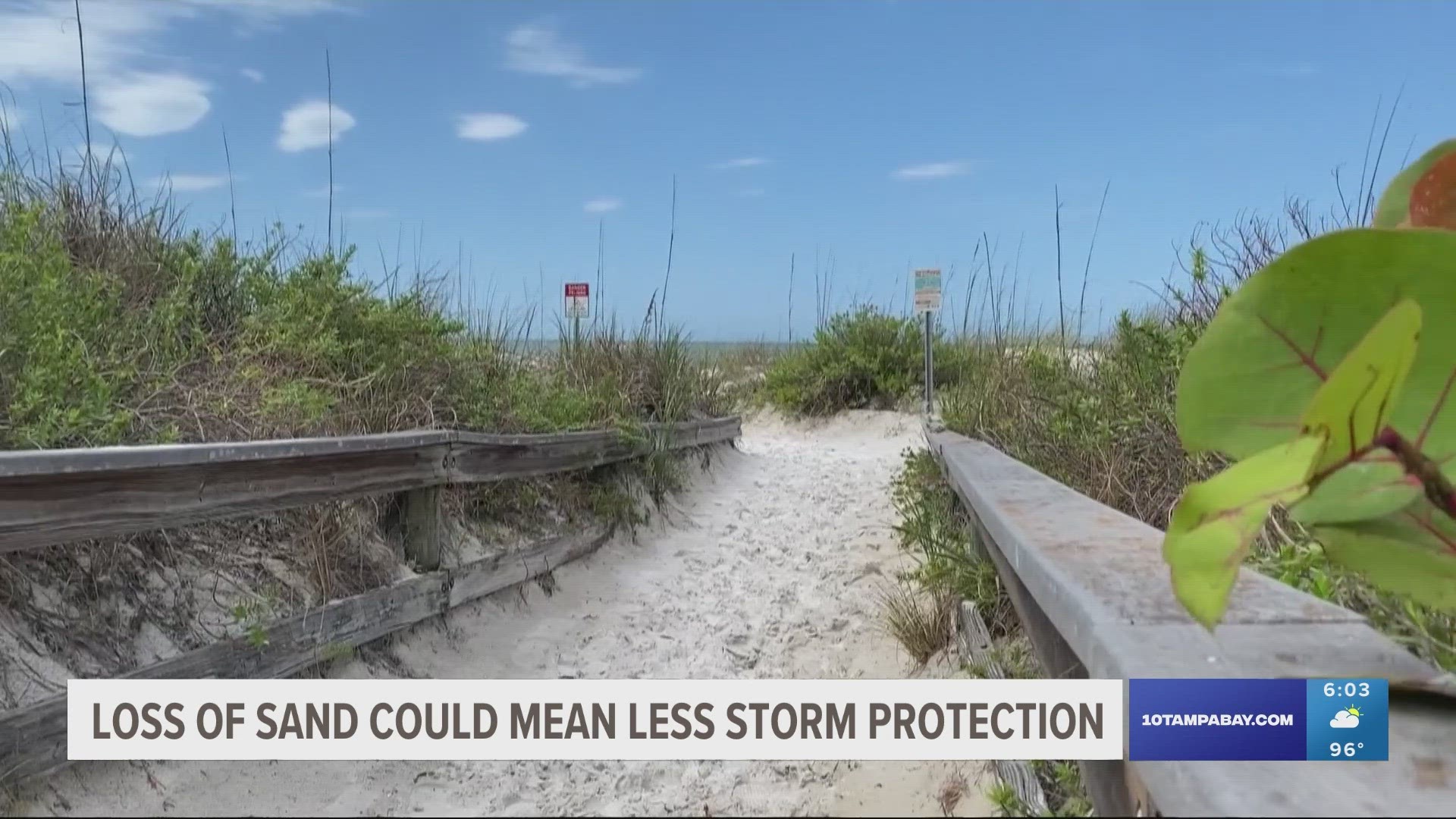NORTH REDINGTON BEACH, Fla. — As we keep an eye on the tropics during peak hurricane season, coastal management will be watching for sand loss in Pinellas County.
Beach renourishment projects across Pinellas County shores have been postponed without an idea of if or when they'll get back on track.
Renourishment to the beaches does more than give you a nice place to lay your towel or provide a safe home for sea turtle nests. Its primary purpose is storm protection. The Army Corps of Engineers beach erosion control project totals 21.8 miles of shoreline in Pinellas County. Sand Key at the north end (14.2 miles), Treasure Island in the middle (3.5 miles) and Long Key at the south end (4.1 miles).
The Army Corps recently changed its requirements for the project to move forward. Now, homeowners in areas zoned for renourishment must sign perpetual property easements. In previous renourishments, the Army Corps didn't require homeowners to sign over access to their land in areas being renourished. Now, they are.
The change comes based on a new policy interpretation of a 1986 law. The property easements give the Army Corps of Engineers access to a homeowners' land up to the seawall.
Pinellas County has not been able to get all homeowners to sign the easements. All of these renourishment projects are connected. Without 100 percent of the easements, none of them move forward.
"We've had storms hit when it's been renourished, and there will be erosion, but the water won't come up and damage any of the infrastructure up past the seawall," North Redington Beach Mayor Bill Queen said.
"If you've got the sand out there, the sand protects the upland property owners. That's the whole idea of having the sand in the first place"
North Redington Beach was last renourished in 2016. It was supposed to be renourished again this year-- but now, the mayor isn't sure when that'll happen.
Dr. John Bishop is the coastal management coordinator for Pinellas County. He shared his concern if a storm hits areas with little sand.
"With the state our beaches are in now, those waves are going to be able to erode sand more and more landward," Bishop said. "And that's very problematic, especially for places that don't have sea walls."
In Pinellas County, the amount of sand on the beach doesn’t impact storm preparations. But when our beaches haven’t been renourished, the expectations for damage are worse.
"Your expectations are higher for damage," Queen said. "You know, and you do a lot more praying that the damn thing turns and goes somewhere else. turn south of us. We want them always to turn south of us."
Pumping sand ashore has a number of benefits: it's home to sea turtle and sea bird nests, beautiful beaches drive tourism and the economic impact far exceeds the investment. But the most important impact is the safety it creates by adding a layer of storm protection to the areas on the frontlines.
"And so that's what it's really designed around is protecting all of the upland homes, condos, roads, all the public infrastructure and private infrastructure," Bishop said.
Next week, the Army Corps of Engineers will give an update on beach renourishment in Pinellas County. The meeting will be held on Friday in Indian Shores. The Jacksonville District Commander will address the planning and implementation of the Pinellas County Project.
Malique Rankin is a general assignment reporter with 10 Tampa Bay. You can email her story ideas at mrankin@10tampabay.com and follow her Facebook, Twitter, and Instagram pages.

